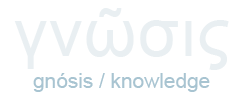Tuning of Thermometric Performances of Mixed Eu–Tb Metal–Organic Frameworks through Single-Crystal Coordinating Solvent Exchange Reactions
Date
2022-11-04Author
Kourtellaris, AndreasMassuyeau, Florian
ISSN
2195-1071Publisher
John Wiley and Sons IncSource
Advanced Optical MaterialsVolume
10Issue
21Pages
2200484-9Google Scholar check
Keyword(s):
Metadata
Show full item recordAbstract
An initial investigation on the employment of targeted structural alterations, achieved through the post-synthesis modification method, for modulation of the thermometric properties of metal–organic frameworks (MOFs) is reported. The MOF Eu0.05Tb0.95-NBDC (NBDC = 2-amino-1,4-benzenedicarboxylate) is chosen as pristine material, and its terminal N,N-dimethylformamide (DMF) molecules are exchanged by various terminal and chelating ligands through a single-crystal-to-single-crystal coordinating solvent exchange reaction. Temperature-dependence luminescence studies reveal that all samples are highly sensitive in the medium range with a maximum relative sensitivity of 2.6% K−1 at 190 K for Eu0.05Tb0.95-NBDC. In addition, a shift of 50 K of the operating temperature range is evidenced for the exchanged analogs. This is attributed to the occurrence of different deactivation pathways in the exchanged analogs due to the presence of N-donor terminal or N/O-donor chelating aromatic ancillary ligands in the place of DMF terminal ligands in the pristine material. Overall, this work provides insights into the role of terminal and chelating ligands on the thermometric properties of mixed Eu–Tb MOFs and proposes a promising strategy to control and modulate their thermometric performances.
Collections
Cite as
The following license files are associated with this item:

